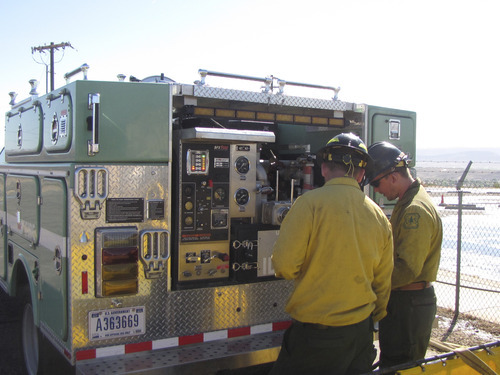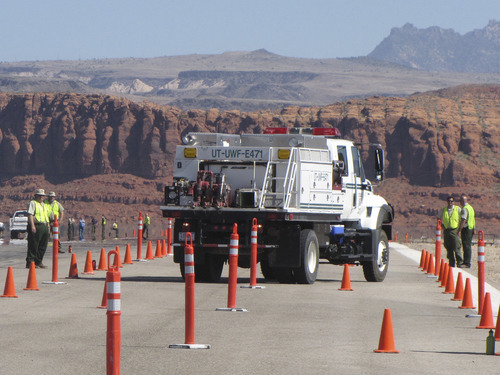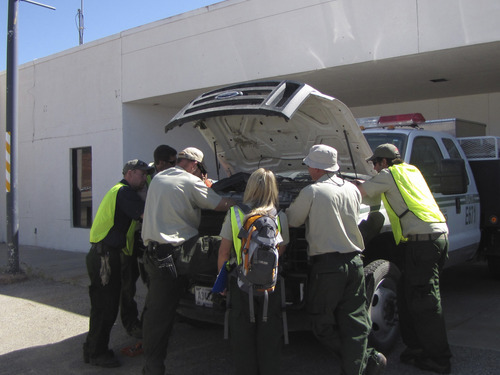This is an archived article that was published on sltrib.com in 2012, and information in the article may be outdated. It is provided only for personal research purposes and may not be reprinted.
St. George •The summer wildfire season has already begun for firefighters attending the Great Basin Fire Engine Academy in this southwestern Utah city.
The 24 firefighters and 32 instructors have spent nearly two weeks learning how to drive, pump and maintain fire engines that can hold anywhere from 300 gallons to 800 gallons of water.
And they could have plenty of opportunity to use that training this fire season — especially in southern Utah where some vegetation doesn't contain the moisture it did in the previous two years, when Utah's snowpack was much bigger.
While the training focused on fire engines, the exercises also builds camaraderie among these certified wildland fire fighters.
"A lot of these people could see each other at fires and know and trust them…because they have been through the same training," said Kim Osborn, a spokeswoman for the academy.
At the pumping station on Tuesday, firefighters were taught how to fill tanks from a water source, how to calculate hydraulic problems, the types of hoses to use, care and maintenance of equipment and how to trouble shoot.
Every student also must pass the driving portion of the training, which took place on the runways of the old St. George airport. The test included driving a dog-legged course defined by orange cones — forward and in reverse — without knocking over any of the cones.
Another course required drivers to back up through a figure-eight, again without knocking over cones. Once they succeeded, everyone involved in the exercise, from students to instructors to spotters, had to drop and do 10 push-ups.
"That's their reward," quipped Osborn.
The academy ends Thursday with a written test.
Milena Rockwood, a veteran driver with the U.S. Forest Service out of Logan and a coach at Tuesday's event, said she was pleased with the latest groups of drivers. Knowing how to handle a fire engine is crucial when battling a fire.
"It can be the biggest safety factor," she said.
Student Nick Hallman, a Forest Service firefighter, said the training improved his skills. "We learned things from hydraulics to laying hoses. It is good for getting experience and confidence."
Hallman, a member of the Ivins City volunteer fire department, said he got hooked on fighting wildland fires during his first fire season. Wildfires are up close and personal, he said.
"In fighting structure fires it's more surround [the fire] and drown," he said.
Jason Curry, a spokesman with the state Division of Forestry, Fire and State Lands, said Tuesday that unlike southern Utah, vegetation throughout the rest of the state is about average for fuel moisture. He expects 600 to 700 wildland fires this season, about the same as last year.
But in addition to fuel moisture, other factors affect the severity of any given fire season, including human carelessness and lightning, which usually sparks fires during southern Utah's midsummer monsoon.







